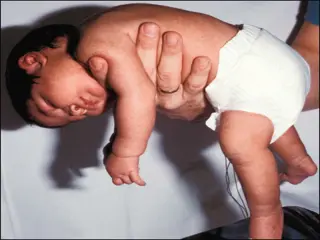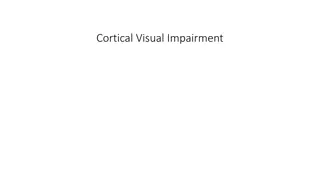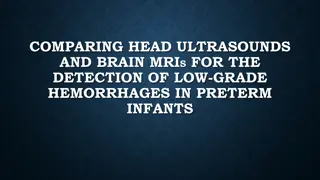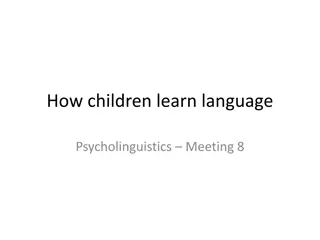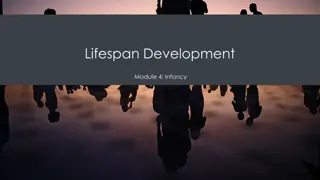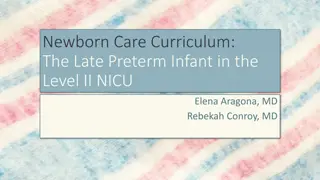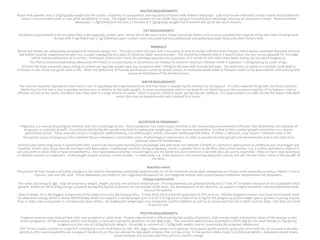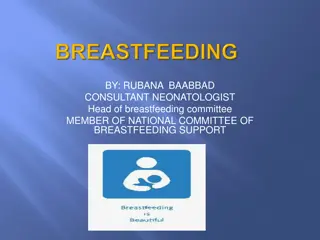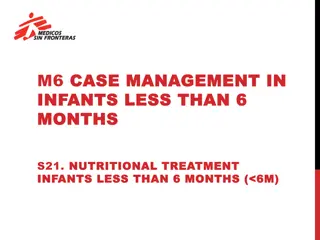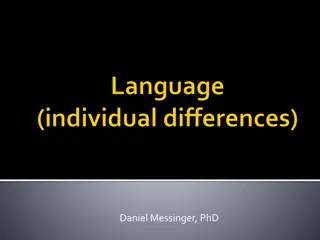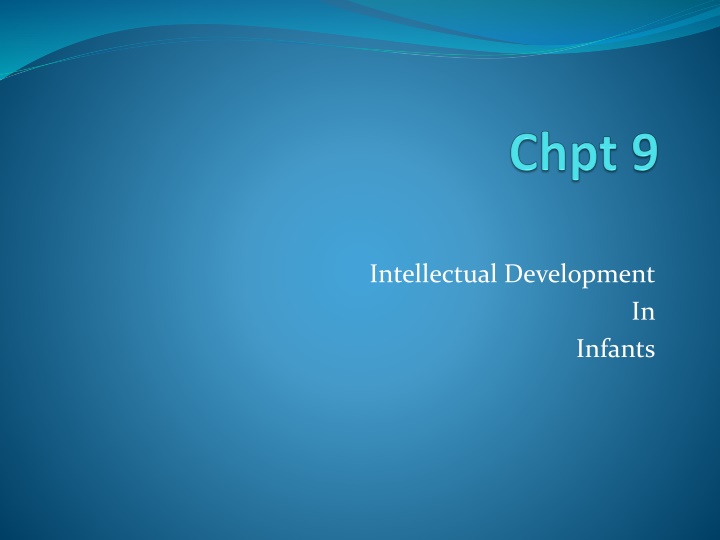
Intellectual Development in Infants: Understanding Brain Growth
The brain plays a crucial role in the intellectual development of infants. Neurons, neural pathways, and the cortex are key elements that contribute to cognitive growth. Activities stimulating senses aid in acquiring new skills through the development of brain pathways. Research shows that experiences shape brain function from birth. Understanding the structure of the brain, including the cerebrum and cerebellum, sheds light on how infants learn and develop. Enhancing understanding of brain function in infants is essential for their overall growth.
Download Presentation

Please find below an Image/Link to download the presentation.
The content on the website is provided AS IS for your information and personal use only. It may not be sold, licensed, or shared on other websites without obtaining consent from the author. If you encounter any issues during the download, it is possible that the publisher has removed the file from their server.
You are allowed to download the files provided on this website for personal or commercial use, subject to the condition that they are used lawfully. All files are the property of their respective owners.
The content on the website is provided AS IS for your information and personal use only. It may not be sold, licensed, or shared on other websites without obtaining consent from the author.
E N D
Presentation Transcript
Intellectual Development In Infants
Objectives List the functions of each part of the brain controls. Describe how brain cells work together. Explain how the brain becomes organized. Identify activities that support the development of brain pathways. Give an example of how neural pathways I the brain help a baby to acquire new skills.
Terms Neuron Neural pathways Cortex Axon Myelin Dendrite Synapse Neurotransmitter
Recent Research 280 New activities stimulate or awaken a baby s sight, sound, touch, taste, and smell and develop new abilities. Increased brain function is due not only the capabilities of the brain, but also to the quantity and quality of experiences.
Research Cont. Neurons = billions of nerve cells in the brain Experiences cause development between neurons Neural Pathways = are the links between the neurons that control body functions and thinking. Links in the brain start at birth and reach their peak in number at about age 10.
Structure of the Brain p280 Newborns - Responses are reflexes, not learned responses. Grasping when touched, kicking off blankets 6 month old Has learned that blankets and socks can be pulled off. 1 year old Can stack toys, stand up, and walk.
Parts of the Brain p281 Cerebrum Receives information from senses and directs motor activities. Controls Speech Memory Problem solving Most of the activities occur in the cortex or cerebral cortex (outer layer)
Parts of the Brain p281 Cont. Thalamus Connects spinal cord and cerebrum Controls emotions
Parts of the Brain p281 Cont. Cerebellum Controls Muscles Coordination Balance Posture
Parts of the Brain p281 Cont. Spinal Cord Transmits info from the body to the brain Transmits info from brain to body Coordinates activities of the left and right sides of the body Controls simple reflexes that don t involve the brain
Parts of the Brain p281 Cont. Brain Stem Controls involuntary activities Breathing Heart rate Blood pressure
Parts of the Brain p281 Cont. Pituitary Gland Secretes hormones that regulate: Growth Metabolism Sexual development
How the Brain Works p282 Neurons nerve cells in the brain You are born with millions of neurons. You are born with all that you will ever have none are added during life. Connected by axons and dendrites Axons = arms of neurons that transmits information Coated with myelin
How the Brain Works p282 Cont. Myelin = waxy protein substance that helps transmit the info Dendrites = arms of neurons that receive information from the axons. They are like branches reaching out toward each other but never touch. Synapses = space /gap between dendrites
How the Brain Works p282 Cont Neurotransmitters = chemicals released by the axon to the dendrites The chemicals look for a dendrite to connect with but can only attach to ones with the right kind of receptors. The more times the same axon and dendrite connect, the stronger the connection can send and receive messages faster. This is the reason repeated sensory input is important.
How the Brain Works p282 Cont Connections in an infant s brain are increased by a stimulating environment or decreased by a lack of stimulation. This can be a 25% change in either direction. Babies love visual stimulation and prefer high contrast images
Building the Brain p284 The more dendrites that grow, the more links that develop, and the more neural pathways that grow The more links / neural pathways, the more brain power The more brain power, the more it can do and the more flexible it becomes Ex: The more roads there are, the more places you can go and the more choices you can make.
Building the Brain p284 The increase in connections is the result of sensory input The more interaction the more complex the brain s wiring becomes.
How the Brain Becomes Organized Each child s brain is organized in a unique way based on their experiences. As connections grow, a group of neurons link together and become systems of nerve cells that control an action or thinking. Ex: A group of neurons can work together to control drinking from a cup or holding a spoon. Every time they try, synaptic connections fires together in a sequence. After repetition, they get it down.
How the Brain Becomes Organized Connections are NOT permanent. If you don t keep repeating them, they diminish. People forget what they have learned. Old saying: If you don t use it, you lose it. Children build so many connections that they have to lose surplus ones to make room for new ones and getting better at old ones. Pruning = helps the brain focus on unseful connections,
Is the Brain Organized Only Once? The brain can be reorganized. If one part is damaged, the person may use other areas to accomplish what the damaged area once controlled.
Speeding the Brains Work Myelin coats the axons making it easier to transmit signals. When born, only the nerves that control basic instincts have the myelin. As they grow, other axons acquire myelin and this continues till about 21. Axons in the area that controls motor skills, vision, and hearing get the myelin first.
Speeding the Brains Work Children who learn slower may not have axons that have yet been coated with myelin. Therefore, the messages are coming slower. If the coating is lost, it affects how the brain and body function. People with multiple sclerosis lack myelin.
Questions p 287 In what part of the brain is the cerebra cortex? 2. What abilities does the cerebellum control? 3. How do dendrites and axons function together in the brain? 4. How does myelin help axons do their work? 5. How do repeated experiences help organize the brain? 6. What happens to synapses throughout life/ 7. What impact on learning results from the rate of the spread of myelin? 1.
Intellectual Development During the First Year p 288 Objectives: List four signs of intellectual growth in infants. Identify Piaget s first period of learning and describe specific abilities that babies learn during this period. Summarize the importance of sensory stimulation to the intellectual development of infants. Describe the progression of concept development in young children.
Intellectual Development During the First Year p 288 Terms Perception Attention span Sensorimotor period Object permanence Imaginative play Symbolic thinking Concepts


